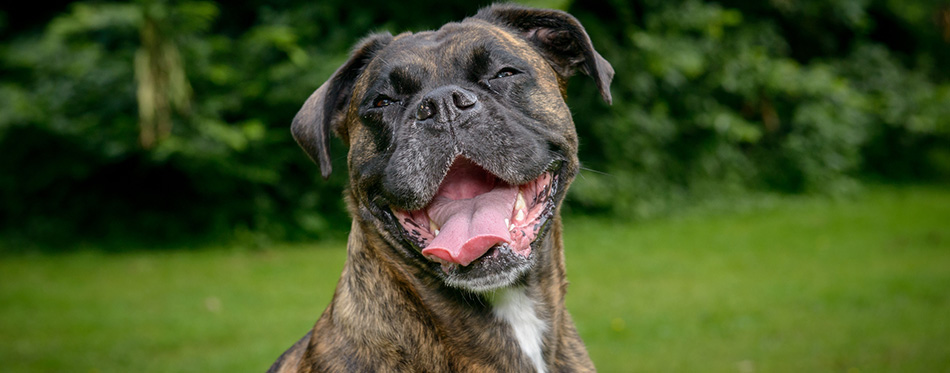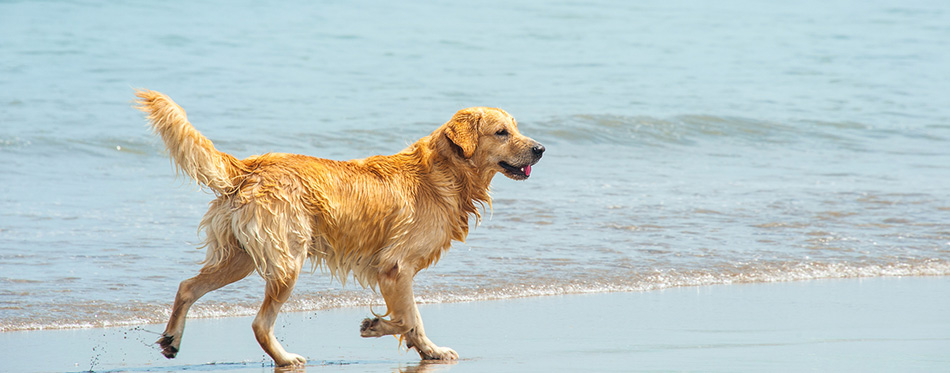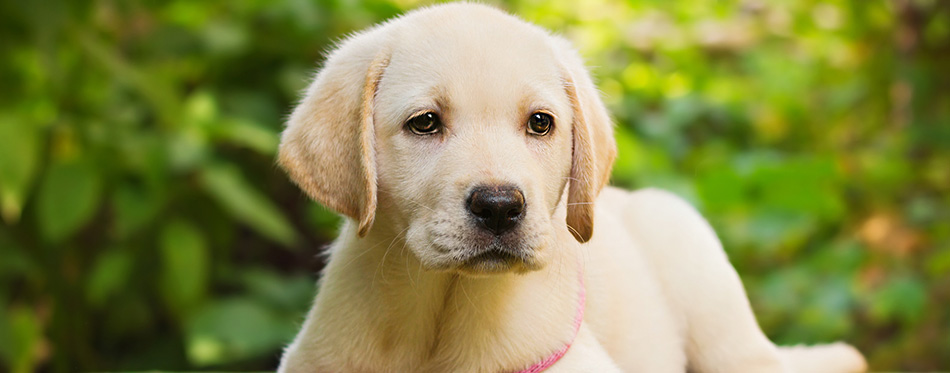As one of the world’s favorite mixed breeds, Boxadors are renowned for retaining child-like dispositions for most of their lives: these fun-loving family pets are always up for a bit of fun. Nevertheless, they know when to rein it in around the family home and love to spend their time being snuggled.
Whether you’ve stumbled across this information guide in the hope that you can discover a little more about your current family pet or are keen to bring a Boxador into your home, we’ve compiled what we believe to be the key facts below about this beloved breed.
History of the Boxador
Although the Boxador breed’s lineage isn’t as exciting as their personalities are, it’s still worthwhile delving into so we can discover more about how our Boxadors were shaped into the delightful canines they are today.
As a “designer breed” – crossbreeds that have been bred to bring out the best of both purebreed parents’ temperaments –it’s likely that Boxadors came into existence in the 1990s when cross breeding was at its peak. Since then, they have quickly become one of the most popular crossbreeds due to their zest for life. But to discover more about these lovable dogs, let’s turn to analyzing the Boxador’s parents: the Labrador and Boxer.

Who are the Parents?
Boxer: Although considered to be purebred nowadays, the Boxer was once a crossbreed between the Bullenbeisser, now extinct, and the Old English Bulldog in Germany. The breed are renowned for their distinctive brachycephalic features – the term referring to their flattened muzzle.
In some circles, Boxers get a bad rap for being stubborn, but we believe this to have much more to do with poor training than anything else. Overall, they’re a playful breed who love nothing more than capering about with members of their family. Although they’ll still maintain their vivacious personality, Boxers do tone it down and become incredibly patient when around young children, thereby making them a fantastic family pet.
You may also like our article on Dog Food for Boxers.
Labrador Retriever: Labradors quite rightly earn their title of most popular dog breed in several countries around the world due to being incredibly gentle souls who want nothing more to love and be loved. Although it is uncertain when the first purebred Labrador originated, dog experts can make an educated guess, determining it to be around the 1830s when members of the breed started to arrive on trading ships from Canada.
A quintessential Labrador Retriever will thrive when bumbling about on walks. Possessing incredibly high levels of intelligence, they’re a prime candidate for working roles including tracking and detection. Paired with their balanced temperament, Labradors are also incredible guide dogs who many humans place their total trust in. One thing’s for certain; if your Boxador puppy takes after their Labrador parent, you’ve found yourself a keeper.
Take a look at our review of Dog Food for Labs for more options.
Quick Facts
Like most designer dog breeds, Boxadors are referred to by many names: Although we believe the term “Boxador” to roll off the tongue, other names such as the “Labboxer” have crept into existence. “Boxer Lab mix” is certainly the most neutral and the name to pop into search engines whenever you require reliable information about your dog.
Their litters are an average size in the dog world: A Boxador parent typically carries between 4-8 pups per litter. This is because Boxadors are larger dogs, meaning they’re safely able to carry more pups. This is in comparison to Chihuahuas who carry, on average, three pups in a litter.

Things You Should Know
With “designer dogs” like Boxer Lab mixes, it’s essential to thoroughly research the breeder: As the Kennel Club are quick to point out, there exists many unscrupulous breeders that mass produce crossbreeds to make financial profit out of popular celebrity trends. Therefore, you should absolutely do your research and choose a reputable breeder who has good intentions towards their Boxer Lab mix puppies. On a similar note, meeting the parents of your prospective Boxador puppy is recommended. As the personality of a mixed breed is less predictable than a pedigree dog, the temperament of a pup’s parents tells you everything you need to know.
They have a high lifespan: Boasting a lifespan between 12 to 15 years, your Boxer Lab mix will hopefully be in your life to celebrate several major life events.
Training
Similar to their parent breeds, a typical Boxador will respond very well to training – after all, it’s just another opportunity to spend time with their human! Given they’re easy to train in comparison with other breeds, this makes a Boxador the perfect type of dog for a first-time owner.
As soon as your Boxador enters your family home, start training straight away. Positive reinforcement techniques will turn them into a brilliant dog that you’ll be proud to show off outside on dog walks!
Feeding
It is widely known that Labradors have a gene mutation that, in short, causes them to be “genetically hungry”. Put differently, POMC stops a Labrador from recognizing that it’s full, thereby increasing the likelihood of obesity in the future. However, one fact that is less well-known in the doggy world is that Labrador cross breeds such as the Boxador are likewise prone to inheriting this genetic variation. As a result, it’s very important to stay on top of the amount of calories your Boxador consumes.
More meals spread out over the course of a day is advantageous for maintaining a Boxador’s high energy levels and digestive tract. We therefore recommend four-five cups of kibble a day, equating to a total of 2,000 calories.
For more guides on choosing the right dog food, you may wish to check out our reviews of the best senior dog food, wet dog food, grain free dog food, dehydrated dog food and cheap dog food.
Exercise
Far from being a lap dog, a Boxer Lab mix loves nothing more than going on daily walks: a mere fifteen minute run-around in the yard will not suffice! You should be setting a minimum of an hour to walk your Boxador Lab mix each day. Afterwards, why not play a game of tug of war in the yard? The fun-loving Boxador will be up for anything and particularly loves exciting games. that involve lots of physical movement and a great deal of energy.
Check out our guide on Interactive Dog Toys for more info.
Socialization
A typical Boxador is a large dog with the intelligence to match. As a result, they require a large amount of mental stimulation to keep them thriving and active. Being social dogs, you should start scheduling playdates with other dogs so your mix puppy learns how to interact as they age, preventing them from becoming aggressive as a result of their uncertainly around other dogs. If you’re worried about other dogs becoming too boisterous around your dog, know that this is an incredibly natural feeling. Therefore, allowing your pup to partake in a playdate with a dog that you know and trust can help ease any anxiety.
Calling attention to what we believe to be the most important point to take away from this article, do not welcome a Boxer Lab mix into your life if you’re often away for long periods of time. Boxadors are prone to suffering from separation anxiety. Many owners shrug this detail off, claiming this to be a stereotypical trait of Boxadors due to their unwavering loyalty, but we think rather differently. If you don’t have one family member who is able to work from home for long periods of time during the day, a Boxador unfortunately isn’t the breed for you. This living situation wouldn’t be favorable for both parties: for the Boxador who suffers from separation anxiety when their humans go away for the day, and for owners who will feel overwhelming guilt knowing that their departure is responsible for their dog’s disquiet.
Grooming
There are many varieties of Boxadors out there. Brown brindle, back, and white constitute the principal Boxador colors, although it’s unusual for members of this dog breed to have a solid coat color. For the most part, their coats will be a blend of two or three colors. A yellow lab boxer mix is one of the most popular mixes that dog lovers purchase.
The beauty of a Boxador’s coat isn’t their only perk. Due to the shortness and glossiness of their coats, any shedding that occurs will be kept to a minimum. Although you may have to brush your Boxer Lab mix’s coat more regularly during the shedding season, a weekly brush combined with a bath every so often will do the trick.
When it comes to ensuring your Boxador’s ears are in a healthy condition, you should check them out for infestations and dirt daily – especially if your Boxador’s ears are rather pointed like their Boxer parent rather than hanging close to the head like their Lab parent. Besides cleaning their ears, your Boxer Lab mix’s teeth should be brushes (or alternatively, they should receive a dental chew) two to three times a week and their nails should be trimmed. Finally, just like Labradors, owners often find their Boxer Lab mix sporting unpleasant goop around their eyes, which can easily be removed with a cloth and a dab of water.
Remember; its important not to view these grooming necessities as a chore, rather than a chance for you and your Boxador to bond and become even more comfortable with one another!
For more help on dog grooming, you may wish to read our guides on the best dog dryer for home grooming, dog grooming gloves, dog nail grinders, dry shampoos for dogs and dematting tools for dogs.

Health
Just like any mixed breed, Boxadors are more prone to suffer from the same health problems as their purebred parents. Let’s take a look below at some of the most common health issues so they can be spotted before becoming more severe.
Brachycephalic airway obstructive syndrome: As discussed above, this pathological condition is caused by dogs with shorter snouts that forces the airway to be shorter. This leads to an elongated soft pallet which partially blocks off a Boxador’s throat, causing breathing issues. Thankfully, due to the normal airway size that Labrador Retrievers possess, Boxadors are less brachycephallic than a purebred Boxer.
Cancer: A 2017 quantitative scientific study found by collecting data on 1175 tumours that Boxer and Yorkshire terriers had the highest rate for all cancers in purebred dogs. Unfortunately, the Boxador also possesses cancer susceptibility genes like its parent dog.
Hypothyroidism: In the situation that your dog’s thyroid gland fails to produce an adequate amount of hormones, your dog may experience irregular bowel movements, a slow metabolism, and a reluctance to partake in any activities.
Temperament
The commendable Boxador temperament is clearly the reason why so many first-time dog owners choose this breed in particular as an addition to their lives. Boxadors are wonderful family companions and, unlike some other breeds, tend to treat each member of the family with the same affection. One trait that will prove this lack of favoritism is when your family enters the house together. Watch as your Boxador excitedly runs from one family member to another, giving each person the same amount of attention!
Although your lovable dog won’t wish to hurt a fly, they can successfully function as a guard dog. Considering the high intelligence levels of a Labrador with the protective urges of a Boxer – a breed who were bred to be medium-sized guard dogs in the last – combining these two breeds together has resulted in the Boxador being the perfect guard dog.
Yet members of this breed know who their friends are. Being outgoing and friendly dogs, they are good with children and don’t shy away from being the center of attention. Following all of the information detailed above, your Boxer Lab mix will transform into a sociable, fun-loving dog up for any kind of adventure.
Source:
- The Boxador – Complete Guide To The Boxer Labrador Mix Breed – Animal Corner

